
Biosemiotics
Scope & Guideline
Exploring the Significance of Life's Language
Introduction
Aims and Scopes
- Interdisciplinary Exploration of Semiotics and Biology:
The journal focuses on the integration of semiotic concepts with biological processes, analyzing how organisms create and interpret signs within their environments. - Umwelt Theory and Its Applications:
A significant theme in the journal is the exploration of Jakob von Uexküll's Umwelt theory, which examines how different species perceive their environments and interact with them through semiotic processes. - Ethology and Behavior Analysis:
Biosemiotics emphasizes the study of animal behavior from a semiotic perspective, investigating how animals communicate and interpret signals in their social and ecological contexts. - Aesthetic and Philosophical Dimensions of Biosemiotics:
The journal addresses the philosophical implications of biosemiotic theories, including discussions on aesthetics, consciousness, and the nature of agency in living systems. - Ecosemiotics and Environmental Interactions:
Research within the journal often explores the semiotic relationships between organisms and their ecosystems, contributing to a broader understanding of ecological dynamics.
Trending and Emerging
- Interspecies Communication and Collaboration:
Increasingly, papers are focusing on the dynamics of communication between different species, particularly in urban and altered environments, indicating a trend towards understanding multispecies interactions. - Integration of Technology with Biosemiotic Research:
There is a growing interest in how technology, including AI and computational models, can enhance our understanding of semiotic processes in biological systems, reflecting contemporary advancements in research methodologies. - Phenomenological Approaches to Biosemiotics:
Recent works are exploring phenomenology as a lens for understanding lived experiences of organisms, particularly in relation to their Umwelt, indicating a trend towards more subjective interpretations of biological phenomena. - Aesthetic Dimensions of Semiotics:
Emerging themes are increasingly addressing the aesthetic aspects of semiotics, exploring how beauty and artistic expression relate to biological communication and perception, thereby bridging art and science. - Ecological and Environmental Concerns:
Research is trending towards ecosemiotic approaches that examine the signs and meanings within ecological interactions, emphasizing the importance of understanding communication in conservation and environmental contexts.
Declining or Waning
- Reductionist Approaches to Semiosis:
Earlier works that focused on a strictly reductionist view of semiotic processes, primarily linking them to mechanistic interpretations of biology, are becoming less frequent as the field embraces more holistic and integrative approaches. - Traditional Evolutionary Models:
There seems to be a waning interest in classical evolutionary models that do not incorporate semiotic analysis, as newer frameworks that integrate meaning-making processes gain traction. - Overemphasis on Human-Centric Studies:
Research narrowly focused on human interpretations of semiotics is decreasing, with a growing emphasis on non-human agents and their communicative practices in various ecological contexts.
Similar Journals
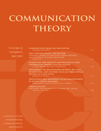
COMMUNICATION THEORY
Transforming Insights into Communication PracticesCOMMUNICATION THEORY is a leading peer-reviewed journal published by Oxford University Press Inc. that focuses on advancing the field of communication studies. With an impressive impact factor and recognition as a Q1 journal in both Communication and Linguistics categories as of 2023, it holds a prestigious position among the top-tier journals in the social sciences. The journal offers a vital platform for researchers and professionals to disseminate innovative theories, empirical studies, and critical analyses that shape our understanding of communication processes and practices. Notably, it ranks #10 in Language and Linguistics and #27 in Communication according to Scopus rankings, reflecting its influential contribution to the academic community. While access options are not currently available, the journal publishes regularly as it converges from its inception in 1991 to the present, ensuring that its readership remains at the forefront of contemporary communication research.
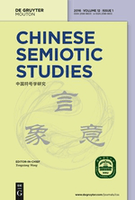
Chinese Semiotic Studies
Exploring the Intersections of Language and MeaningChinese Semiotic Studies is a pivotal journal published by DE GRUYTER MOUTON, specializing in the interdisciplinary exploration of semiotics within the context of Chinese language and culture. Established in 2009, this journal serves as a crucial platform for scholars and researchers, addressing the intricate relationships between semiotic theory, communication, and linguistic practices in China. With its current rankings placing it in the Q3 category for Communication and Q2 for Linguistics and Language, Chinese Semiotic Studies is recognized for its significant contribution to the academic discourse in these fields. Although it operates under a subscription model, the journal offers robust opportunities for knowledge dissemination and research collaboration among professionals and students alike. By fostering a deeper understanding of semiotic processes, the journal plays an essential role in advancing scholarship and innovation within the realms of linguistics and communication, making it a valuable resource for anyone interested in the dynamic interplay of language, culture, and meaning.
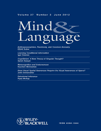
MIND & LANGUAGE
Navigating the Depths of Language and Cognitive ScienceMIND & LANGUAGE, published by WILEY, is a premier academic journal that has established itself as a leading platform for interdisciplinary research at the intersection of linguistics, philosophy, and cognitive science. With a noteworthy impact factor and a remarkable ranking in the top quartiles (Q1) for both Linguistics and Language as well as Philosophy, it reflects the journal’s robust contribution to the academic community, garnering attention from researchers and scholars worldwide. Since its inception in 1986, MIND & LANGUAGE has provided an avenue for exploring the complexities of language perception, cognitive processes, and the philosophical implications of linguistic studies. Its comprehensive scope ensures that it remains a critical resource for professionals and students alike who are engaged in the exploration of language's role in human thought and society. The journal's rigorous peer-review process guarantees the high quality and scholarly integrity of the published work, making it an essential addition to any academic library.
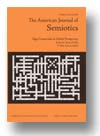
AMERICAN JOURNAL OF SEMIOTICS
Unlocking the Power of CommunicationThe American Journal of Semiotics is a pivotal publication in the field of semiotic studies, focusing on the intricate relationships between signs and meanings across various disciplines. Published by the Philosophy Documentation Center, this journal disseminates vital research and theoretical advancements that contribute to a deeper understanding of language, communication, and cultural interpretations. Although the journal has had a period of coverage in Scopus from 1996 to 2018, it continues to hold relevance with notable rankings in the Arts and Humanities and Social Sciences categories, showcasing its diverse scholarly impact. The journal aims to engage researchers, professionals, and students through a rigorous exploration of semiotic theory and its applications, reinforcing its position as a significant resource in the academic landscape.

Intersezioni
Navigating the Intersections of KnowledgeIntersezioni, published by SOC ED IL MULINO, is a prominent Italian journal in the domains of Arts and Humanities and Cultural Studies. With an ISSN of 0393-2451 and an E-ISSN of 1973-8196, this journal provides a platform for scholarly discussions and innovative research while maintaining a steadfast commitment to high academic standards since its inception. The journal's historical commitment is reflected in its converged years from 1981 to 1983, 1987 to 1989, and now 1997 to 2024. Noteworthy for its impact in the field, it holds a Q3 ranking in both Arts and Humanities (miscellaneous) and Cultural Studies for 2023. This positions the journal as a valuable outlet for researchers, professionals, and students looking to engage with contemporary issues and theories that shape cultural discourse today. While it is not an open-access journal, its contributions continue to be vital in enriching academic dialogue and fostering insights in the humanities landscape, recognized by its Scopus rankings in social sciences and general arts and humanities.
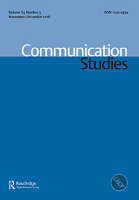
Communication Studies
Exploring New Frontiers in Communication ResearchCommunication Studies is a premier journal dedicated to advancing the field of communication, published by Routledge Journals, Taylor & Francis Ltd in the United Kingdom. With an ISSN of 1051-0974 and an E-ISSN of 1745-1035, this journal has established itself as a pivotal platform for scholarly work since its inception in 1989. As a member of the esteemed Q1 quartile in communication for 2023, it ranks within the top echelons of the Scopus database, placed at #106 out of 511 in social sciences communication, signaling its influential contribution in the field, with a striking 79th percentile ranking. The journal publishes original research, theoretical discussions, and critical reviews that address various aspects of communication processes and practices, making it invaluable for researchers, professionals, and students who wish to stay abreast of the latest developments. While it currently does not offer Open Access options, its extensive reach and rigorous peer-review process ensure the publication of high-quality, impactful research. For inquiries, the editorial office can be contacted at 2-4 Park Square, Milton Park, Abingdon OX14 4RN, Oxon, England.

Biology-Basel is a premier, peer-reviewed open-access journal published by MDPI since 2012, situated in the heart of Switzerland. With an E-ISSN of 2079-7737, this journal serves as a vital platform for the dissemination of innovative research across the broad spectrum of Agricultural and Biological Sciences, Biochemistry, Genetics, Molecular Biology, and Immunology. Recognized for its rigorous editorial standards and impactful findings, it currently ranks Q1 in Agricultural and Biological Sciences and holds impressive positions in several categories according to the 2023 Scopus rankings. The journal’s open-access model ensures that high-quality research is freely available to a global audience, fostering collaboration and knowledge sharing among researchers, professionals, and students alike. Spanning from 2012 to 2024, Biology-Basel is committed to reflecting the latest advancements in biological sciences, making it an essential resource in the ever-evolving landscape of biological research.
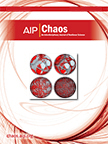
CHAOS
Unraveling the Mysteries of Dynamic ComplexityCHAOS, an esteemed journal published by AIP Publishing, is a cornerstone of interdisciplinary research, focusing on the intricate dynamics of complex systems across various scientific domains. With a balanced impact factor, this journal emphasizes high-quality contributions in Applied Mathematics, Mathematical Physics, and Statistical and Nonlinear Physics, while also exploring intersections with Medicine and Physics and Astronomy. With rankings showing a remarkable percentile placement, notably #7 in Mathematical Physics and #10 in Statistical and Nonlinear Physics, CHAOS has established itself as a leading platform for disseminating groundbreaking research since its inception in 1991. This journal not only aims to foster collaboration among scientists but also to advance theoretical and computational frameworks that unravel the complexities of chaotic systems. Researchers, professionals, and students alike will find rich insights and innovative theories within its pages, making it an invaluable resource in the pursuit of knowledge and understanding in the modern scientific landscape.
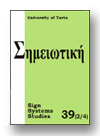
Sign Systems Studies
Bridging Theories and Practices in Language ResearchSign Systems Studies is a premier interdisciplinary journal published by Tartu University Press, focusing on the intricate relationships between language, meaning, and communication. With an ISSN of 1406-4243 and an E-ISSN of 1736-7409, this esteemed publication has been an open-access resource since 2009, ensuring that cutting-edge research is accessible to a global audience. Based in Estonia, this journal has made significant strides in the field of Linguistics and Language, achieving a Q1 category ranking in 2023 and impressive Scopus rankings in both Arts and Humanities and Social Sciences. The journal not only fosters scholarly discourse but also encourages innovative research methodologies across its scope. With its continual growth and impactful contributions recognized worldwide, Sign Systems Studies plays a vital role in advancing the understanding of language systems, making it an invaluable resource for researchers, professionals, and students dedicated to the study of linguistics.

BIOLOGY & PHILOSOPHY
Advancing Insights at the Intersection of Biology and PhilosophyBIOLOGY & PHILOSOPHY, published by SPRINGER, is a leading journal that explores the intricate and dynamic interplay between biology and philosophy. With an impressive impact factor in the Q1 category across multiple disciplines including Agricultural and Biological Sciences, History and Philosophy of Science, and Philosophy, this journal has firmly established itself as an essential resource for researchers, professionals, and students alike. Since its inception in 1986 and continuing through 2024, BIOLOGY & PHILOSOPHY fosters critical inquiry and discussion, inviting contributions that advance the understanding of biological sciences from philosophical perspectives. Although it operates under a traditional subscription model without Open Access options, its high Scopus rankings—#38 in Philosophy and #14 in History and Philosophy of Science—underscore its significance and influence in contemporary research. For those keen on delving deeper into the ethical, epistemological, and conceptual challenges posed by biological research, this journal serves as a compelling platform for groundbreaking scholarship.